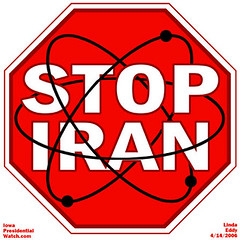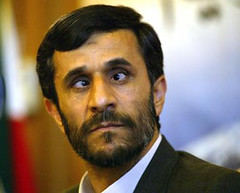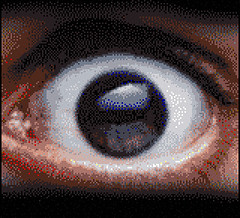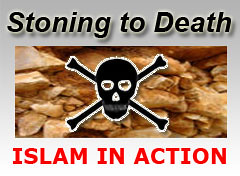Friday, August 10, 2007
TERRORISTS FULLY AWARE OF "SECRETS" -- NOT OUR POPULACE
Researchers from King’s College London have raised the spectre of a new terrorist technique which would “kill an order of magnitude more people than a dirty bomb” and is “likely to incite considerably more fear”.
(Alan note: as a screenplay writer myself, I can recognize the theoretical creative writing being applied to the subject of mass terror chemicals. Theoretical from the point of view that it will work as planned, the terror groups know how to make and deliver it and also from the perspective that any of this is new to the terrorists.
Terrorism means the instilling of fear - terror - not just the death toll. You can scare the daylights out of the common man or woman in the street by threat and intimidation or by articles like these.
While the details and chemicals mentioned may not be practicable and fully adaptable to mass murder by terrorists, the danger they pose increasingly, the intensity of efforts to hurt us - has to be taken VERY seriously.
While the mindsets in Europe are turning more quickly against terrorism and the Islamic vehicle that encourages and facilitates the Western deaths they envisage, here in America we complacently flow down the mental river of "Denial".
The real danger comes less from the chemicals than the fanatical Islamists determined to use them on us.)
Writing in securo-thinktank journal Survival (short digest here
(http://www.iiss.org/publications/survival/survival-summaries/2007-—volume-49/2007-—issue-3)
- full article requires payment), James Acton, M Brooke Rogers and Peter Zimmerman lay out their thoughts.
The article is called Beyond the Dirty Bomb: Re-thinking Radiological Terror.
Essentially, the three academics have been inspired by the recent murder of Russian emigre Alexander Litvinenko, internally poisoned with radioactive Polonium-210.
They have thought of a new abbreviation to describe mass radiological poisoning without the use of explosives - "I-3", for ingestion, inhalation and immersion. The idea is that terrorists might get large numbers of people to swallow, breathe, or be drenched with fluids containing deadly amounts of radioactive isotopes.
The Guardian reports
(http://www.guardian.co.uk/science/2007/aug/10/uknews.terrorism)
on the research this morning, and Guardian scribe Julian Borger spoke to Mr Zimmerman, who is professor and chair of science and security at King’s College London.
“The article does not provide details of the most devastating method of attack the authors have conceived, for security reasons, but Professor Zimmerman described one scenario using a water-soluble radioactive isotope widely used in hospitals and industry: ‘I can then tap into the anti-fire spray in a theatre, and if I can trigger the spray, I can soak everyone in the room’,” Borger wrote.
Prof Zimmerman is talking about powdered caesium-137, widely used in radiotherapy machinery and such like.
According http://www.iaea.org/NewsCenter/PressReleases/2002/prn0209.shtml
to the UN nuclear watchdog, just such a nightmare scenario already occurred in Brazil in 1987.
In that case, scavengers broke open a canister of caesium-137 from an old radiotherapy machine. Brazilian locals, thinking the glowing blue powder was pretty, circulated the stuff widely over the next week.
Many rubbed it on themselves. Others ate food adulterated with the powder.
In all, 237 people were reckoned to have been contaminated by the Brazilian authorities. Four of them died, and a major cleanup operation was required in the various affected homes and businesses.
So, terrorists might get hold of some caesium-137 and put it into a sprinkler system, say in a theatre. Hundreds of people would then be drenched with a solution of the isotope. Probably they wouldn’t start drinking it, though, and it’s reasonable to hope that they might shower quite soon rather than rubbing the solution into their skins and waiting a week or so.
Indeed, if it was known what had occurred, the best defence would be to leave the sprayers on until all the contaminated water had been washed off with fresh - such is a standard defence against fallout in military organisations.
Royal Navy warships are fitted with deck water-spray points for precisely this reason.
All in all, then, such an attack could be expected to be significantly less deadly than the Brazilian mishap. So it might kill one or two people tops. Why not just block the fire exits and do a bit of arson?
You’d kill a lot more people that way, and you’d need even less knowhow. Why not sabotage some railway tracks, or do your arson in the Tube - Potters’ Bar, King’s Cross, here we come again. Why not sneak about taking raw chicken out of restaurant fridges at night, then putting it back in without the chef knowing.
Why not drive an 18-wheeler into a school playground at 50mph?
Why not pour oil out of a car window along the fast lane of the M25 just before rush hour?
No need to bust into any hospitals or hang around the radioisotope bazaars of Central Asia for any of that, is there? And you’d kill a lot of people.
Prof Zimmerman’s proposal is a tough new control and licencing regime for all radioactive materials (bound to have a great effect on the NHS budget). Maybe his special undisclosed attack method really is so deadly as to justify this.
He told the Graun that his secret plan “would be capable of killing several hundred, maybe upwards of a thousand, and paralysing a city without any question at all”, so maybe it is.
Still, what’s next? Control and licencing of petrol, matches and prybars? Security cameras and alarms in every fridge?
No, obviously not. Terrorist incidents with one or two figure death tolls are only different from the ordinary run of accidents and crime and deadly mayhem if we make them so.
Perhaps Prof Zimmerman has thought of something new - 1,000 dead in one hit would be serious (your chance of survival as a Londoner, though 99.99 per cent or better). But his caesium-137 sprinkler attack notion doesn’t lend much credence to his arguments.
Nor does his decision to publish now, before the suggested countermeasures are in place - which they surely will be presently, if his special-sauce attack plan is as advertised.
Apparently, one of Zimmerman’s co-authors, Brooke Rogers, would like to see an intensive information campaign to keep the public informed and prevent panic.
We’re doing our best on that one. It’s hard to say that she and her co-authors are, though.
Unusual paranoia over chemical attack in the US takes many forms. It can be seen in a recent piece of trouble from the Department of Homeland Security, a long list of “chemicals of interest” it wishes to require all university settings to inventory.
“Academic institutions across the country claim they will have to spend countless hours and scarce resources on documenting very small amounts of chemicals in many different labs that are scattered across sometimes sprawling campuses,” reported a recent Chemical & Engineering News, the publication of the American Chemical Society.
“For 104 chemicals on the list, the threshold is ‘any amount.’”
An update to address university workload concerns is said to be scheduled for “early to mid-June.”
However, before that happens, let’s take a peek at the list.
If one has a little bit of background in chemical weapons synthesis, one can see DHS is possessed by the idea that terrorists might storm into universities and plunder chem labs for precursors to nerve gases.
Isopropyl methyl phosphonochloridate is to be inventoried in any amount. Although not specified, it is one potential ingredient on the road to sarin synthesis.
Zooming in on the list for its specific entry, a quick look up and down a few rungs shows a cluster of similar compounds, all of which are earmarked at “any amount” for the same reasons.
While some of it seems OK, there is some interior nagging that this is not entirely the case.
The combination of unusual organic precursors into nerve gases, for instance, is not nearly as easy to do as is generally thought by counter-terror experts.
Triethanolamine, also flagged at “any amount,” can be used to produce mustard gas. However, it’s also used commercially in detergents and many other products.
Bad air day Nitric oxide, by way of another example, is of interest to DHS in “any amount.” In the simple reaction caused by tossing a penny into a beaker of nitric acid, nitric oxide is formed and immediately combines with atmospheric oxygen to form the toxic red brown gas, nitrogen dioxide.
The inclusion of it is simply a head scratcher since the particular activity doesn’t really lend itself to the making of a terror weapon.
It’s more appropriately thought of as a compound that contributes to smog formation. Similarly earmarked is sulfur dioxide, the gas resulting when sulfur is burned. Air pollution, as far as is known, isn’t useful to terrorists.
Another compound in the “any amount” catch all is hydrogen sulfide, the toxic gas that smells like rotten eggs.
Functionally, generating “any amounts” of hydrogen sulfide has always been part of an education in chemistry. Believe it or not, there was a time when generation of it was included as a spark to an interest in chemistry in children’s store bought chemistry sets.
However, in the past fifteen years we’ve had the pleasure of publication of a number of poisons for ninnies books, among them Maxwell Hutchkinson’s “The Poisoner’s Handbook,” published by Loompanics in 1988.
Much of Hutchkinson was subsequently plagiarized into jihadist documents on chemical terror, among these being Abdel-Aziz’s Mujahideen Poisons Handbook, which if found during terror investigations functionally works toward ensuring a stay in the dungeon for owners.
The Mujahideen Poisons Handbook contains an old hydrogen sulfide producing experiment. “It is very dangerous,” its author states, not particularly accurately. “It can kill a person in thirty seconds.”
Instead of meditating on the naiveté of the uneducated man who has never had a chemistry set, since 9/11 we have instead been plagued by terror assessors who are not chemists, mucking with regulation through the offices of DHS’s science directorate.
To make the weirdness of this clear, hydrogen sulfide - like almost everything in the Mujahideen Poisons Handbook, goes back to the materials in The Poisoner’s Handbook.
“The manufacture of hydrogen sulfide is [simple],” writes Hutchkinson. “It is created by water coming into contact with phosphorus pentasulfide.”
This is actually true, unlike many things in terrorist poison handbooks. On the DHS list, phosphorus pentasulfide is only of interest if a university has a ton of it.
Hydrogen sulfide, any amount. Phosphorus pentasulfide, one ton. Looking for logic becomes like trying to pick up spilled mercury.
While the American Chemical Society and universities would not be expected to know any of this, it does noticeably impact policy.
On a FEMA (FEMA being part of DHS) website, for instance, we read “Terrorists Planned Deadly Gas Attack On Western Targets.”
The standard woeful chemical terror document is cited, although not by name. Hydrogen sulfide, cyanide and narcotics are mentioned. These clues inform that the terrorist document is another child of Hutchkinson.
Of special note is the box out quote -”30 ml of the agent can kill 60 million people” which addresses the Islamist terror biochemist’s fascination with the toxin that produces botulism.
Jihadists, it has been found, have no idea how to make the toxin.
They just like the idea of something that deadly and because the translators of Hutchkinson have said it is easy to do by throwing meat, excrement and dirt in a can, it is almost everywhere in their literature.
Of course, it’s just a question of time before terrorists gain the capability to attack with such things, it is written.
Although it wouldn’t be clear to the heads of university chemistry departments and other organizations affected by the DHS “chemicals of interest” list, it is somewhat obvious to this writer that the agency’s regulations are strongly influenced by people who believe the literature of Hutchkinson and others, translated into Arabic, to be an actual threat.
The practical end result has been bad and universities have issued a loud protest over the list.
For instance, IPC, a trade organization of the electronics industries writes in a letter that the DHS list is “inadequately defined,” a rather gentlemanly way of putting it.
In another memo of comment, the ACS also notes the DHS requirement will be “impossible to implement in laboratories” and it will “conflict with the education and research mission of institutions.”
The ACS memo cites a few onerous examples from the DHS document, hydrogen sulfide being one of them.
How this will sort out in the next weeks remains to be seen. Initial bets would be on academic science brushing back the Department of Homeland Security.
George Smith is a Senior Fellow at GlobalSecurity.org, a defense affairs think tank and public information group. At Dick Destiny (http://www.dickdestiny.com/blog/dickdestiny.html), he blogs his way through chemical, biological and nuclear terror hysteria, often by way of the contents of neighborhood hardware stores.Related stories
Securo-prof claims to invent new, much deadlier dirty bomb (10 August 2007)http://www.theregister.co.uk/2007/08/10/another_day_another_kinda_bomb/Gaming 4G warfare for the USAF, with rayguns (2 August 2007)http://www.theregister.co.uk/2007/08/02/poa2_usaf_simulation/Crazy cyber-jihadi emails planned death for Mayport, FL (16 July 2007)http://www.theregister.co.uk/2007/07/16/irhabi007_jailed_emails/‘al-Qaeda’ puts on big shoes, red nose, takes custard pie (2 July 2007)http://www.theregister.co.uk/2007/07/02/terror_idiocy_outbreak/About those 844 security breaches... ‘fess up, Congress tells DHS (21 June 2007)http://www.theregister.co.uk/2007/06/21/congress_questions_dhs_cyber_security/Israeli futurologist predicts terror horror (21 June 2007)http://www.theregister.co.uk/2007/06/21/future_terror/Iraq collapse may pose new WMD threat, say UN monitors (21 June 2007)http://www.theregister.co.uk/2007/06/21/unmovic_iraq_bio_chem/UK.gov wants to ramp up, co-ordinate anti-terror investment (12 June 2007)http://www.theregister.co.uk/2007/06/12/home_office_security_launch/Porton Down bio-terror tech re-used in odour-proof pants (5 June 2007)http://www.theregister.co.uk/2007/06/05/porton_down_cbrn_pants/Suspect in case that helped sell Iraq war cleared, again (16 May 2007)http://www.theregister.co.uk/2007/05/16/siac_clears_ricin_suspect/Loose mouth and loose change - $5 tip leads to terror finance rap (12 April 2007)http://www.theregister.co.uk/2007/04/12/abujihaad_and_azzam/TV’s cyber-jihad slot exposes al Qaeda’s web ops. Or not (21 March 2007)http://www.theregister.co.uk/2007/03/21/60_minutes_e-qaeda/
Subscribe to:
Post Comments (Atom)














No comments:
Post a Comment